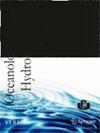Determination of functional structure of soft-bottom marine macrobenthic communities of the Samsun Shelf Area using biological traits analysis
IF 1
4区 环境科学与生态学
Q4 OCEANOGRAPHY
引用次数: 0
Abstract
Abstract Biological Traits Analysis (BTA) was used to investigate the functional structure of marine macrobenthic communities along the Samsun Shelf Area (SSA). Benthic samples were collected seasonally from five different locations and at four different depths using a Van Veen grab sampler. Macrofaunal communities distributed in the SSA were assessed using 10 biological traits to identify characteristic traits for each depth and location. It was found that variability of benthic ecosystem functions in the SSA was driven by biological traits such as maximum size, living habit, sediment position, feeding mode and type of reproductive behavior. Bivalves, polychaetes and crustaceans of small to medium size, biodepositing, burying themselves in the sediment (burrowers) and feeding in suspension were relatively more abundant at depths of 0–60 m. However, the biomass of Amphiura, Abra, Papillicardium and some polychaetes characterized by medium to large sizes, diffusive mixing, free living and feeding on deposit and subsurface deposit showed higher values at depths below 60 m. In general, it is concluded that the functional structure of the benthic infauna in the SSA has adapted to physical disturbance, and communities distributed in this area consist mainly of taxa resistant to mechanical pressure.利用生物性状分析确定桑孙大陆架软底海洋大型底栖生物群落的功能结构
摘要利用生物性状分析(BTA)方法研究了萨姆森大陆架地区海洋大型底栖生物群落的功能结构。使用Van Veen抓斗采样器,季节性地从五个不同的地点和四个不同的深度采集底栖生物样本。分布在SSA中的大型动物群落使用10个生物学特征进行评估,以确定每个深度和位置的特征特征。研究发现,SSA底栖生态系统功能的变异是由最大体型、生活习性、沉积物位置、进食方式和繁殖行为类型等生物学特征驱动的。中小型、生物沉积、埋在沉积物中(洞穴)和悬浮觅食的双壳类、多毛类和甲壳类动物在0–60米深处相对更丰富。然而,安菲乌拉、阿布拉、泥鳅和一些多毛类的生物量以中大型、扩散混合为特征,沉积物和地下沉积物上的自由生活和觅食在60 m以下的深度显示出更高的值。总之,可以得出结论,SSA中底栖动物的功能结构已经适应了物理干扰,分布在该地区的群落主要由抵抗机械压力的类群组成。
本文章由计算机程序翻译,如有差异,请以英文原文为准。
求助全文
约1分钟内获得全文
求助全文
来源期刊
CiteScore
1.70
自引率
11.10%
发文量
8
审稿时长
>12 weeks
期刊介绍:
Oceanological and Hydrobiological Studies is an international journal published by the Institute of Oceanography, University of Gdańsk in Poland. The journal has 4 issues per year and contains papers on all aspects of the marine environment and hydrobiology. All manuscripts are reviewed by editors and independent experts. Based on the referees'' recommendations, the Editor will make a decision on whether to accept a contribution. All articles are published in English. The journal is open to all matters concerning the water environment, thus providing the readers with a wide spectrum of topics in every issue.

 求助内容:
求助内容: 应助结果提醒方式:
应助结果提醒方式:


